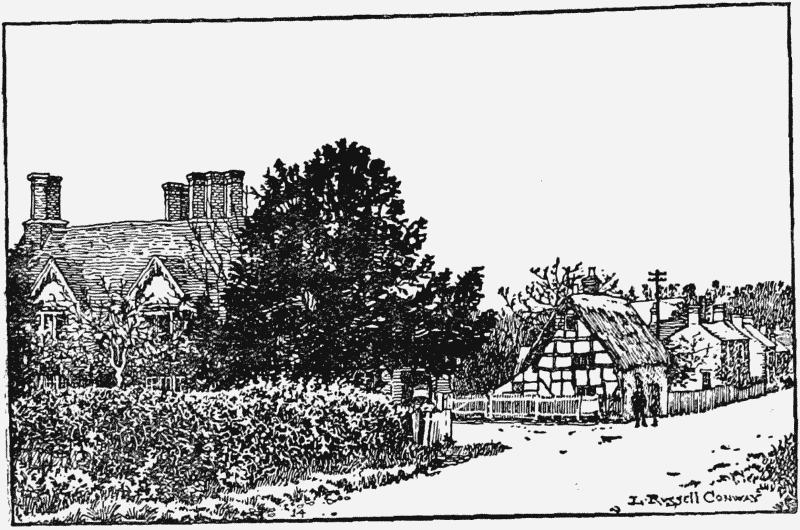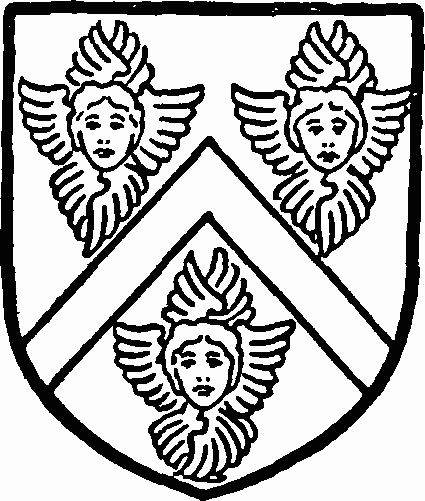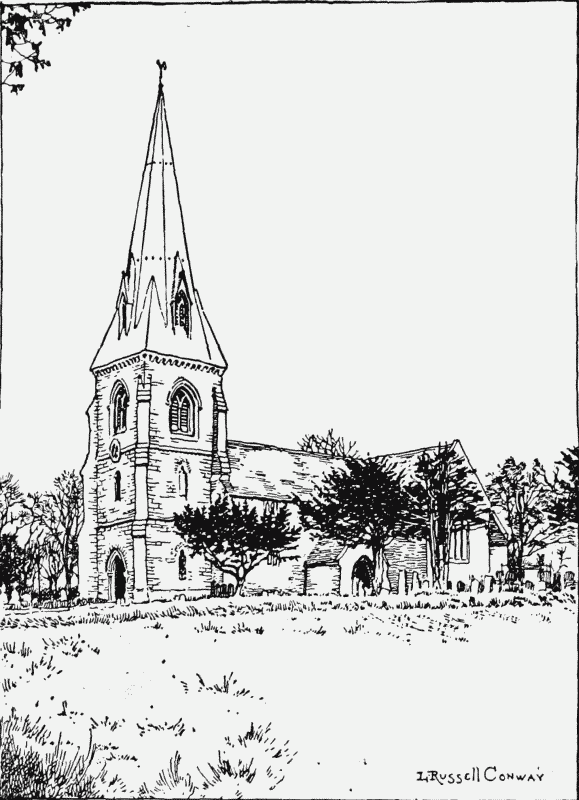A History of the County of Buckingham: Volume 4. Originally published by Victoria County History, London, 1927.
This free content was digitised by double rekeying. All rights reserved.
'Parishes : Steeple Claydon', in A History of the County of Buckingham: Volume 4, ed. William Page (London, 1927), British History Online https://prod.british-history.ac.uk/vch/bucks/vol4/pp226-229 [accessed 23 April 2025].
'Parishes : Steeple Claydon', in A History of the County of Buckingham: Volume 4. Edited by William Page (London, 1927), British History Online, accessed April 23, 2025, https://prod.british-history.ac.uk/vch/bucks/vol4/pp226-229.
"Parishes : Steeple Claydon". A History of the County of Buckingham: Volume 4. Ed. William Page (London, 1927), British History Online. Web. 23 April 2025. https://prod.british-history.ac.uk/vch/bucks/vol4/pp226-229.
In this section
STEEPLE CLAYDON
Claindon (xi cent.); Stepul Claydone (xiii cent.).
This parish is bounded on the north by the Claydon Brook, and covers 3,329 acres, of which 2,610 are permanent grass, 217 arable, and 64 acres woods and plantations. (fn. 1) The land rises from 265 ft. above the ordnance datum at Hog Bridge at the west end of the village to 342 ft. near Claydon Hill Farm in the north-east of the parish. Both soil and subsoil are clay. Crops of wheat and beans are raised, but the land is principally used for grazing. The Great Central railway passes through the southwest of the parish. The Oxford and Bletchley branch of the London and North Western railway crosses its south-east corner and has a station called Claydon.

The Village, Steeple Claydon
Half a mile to the north-west of the station is the village of Steeple Claydon, with the church standing in the eastern and higher part. The Manor Farm to the north-east of the church occupies the site of the manor-house of the Chaloners, which was taken down in the early 18th century. (fn. 2) West of the church is the Camp, a modern house of brick, the residence of Major Wilfred Woodcock. In the house which formerly stood on the site Cromwell slept on the night of 3 March 1644 before advancing to attack Hillesden House. The earthworks from which the house takes its name were probably thrown up at this time to protect the Parliamentary forces.
The village contains several 17th-century brick and timber houses with thatched roofs and original brick chimneys. The building which contains the public library has been formed by adding to a school-house built by Thomas Chaloner in 1656. The original portion is a rectangular brick building with an old bellcote at the east end. On a stone rebuilt in the gable of the modern porch are the arms of Chaloner and the inscription H. SCHOL. FUND. T. C. MDCLVI.' The library comprises a collection of between 3,000 and 4,000 books, to the formation of which Miss Florence Nightingale contributed, and her cheque for £50 hangs on the wall in a stone frame. The present vicarage was built after the old vicarage was destroyed by fire in 1899. (fn. 3) The west end of the village lies in a deep hollow, and the cottages here originally built on the waste belong to a number of small owners, who are gradually replacing them by better houses. There is a Wesleyan chapel in the village. The principal house in the North End is called the Moat. Windmill Hill Farm is in the north-east of the parish. The name of Bull Lane is due to bull-baiting days, and shows the route by which the bulls entered the village. The sport took place as late as 1827 in the Chaloner school yard. (fn. 4)
Coins of Carausius and Allectus were found at Steeple Claydon in 1620. (fn. 5)
This parish was inclosed in 1795. (fn. 6)
Manors
Steeple Claydon appears to have been always held of the Crown in chief, (fn. 7) and was not attached to any particular honour. It later belonged to the group of Crown lands which became queens' dower lands. (fn. 8)
STEEPLE CLAYDON MANOR, held at the Conquest by Queen Edith, was assessed in 1086 at 20 hides, and held by Alric the cook. (fn. 9) Subsequently it reverted to the Crown, and was given by Henry I about 1120 in marriage with Edith Forne to Robert Doyley the younger. (fn. 10) His grandson Henry Doyley (see advowson) granted it to John Fitz Geoffrey (fn. 11) about 1230, and his right in it was recognized by the Crown in 1232 after the death of Henry Doyley. (fn. 12) Steeple Claydon Manor descended with Whaddon to Richard Earl of Ulster, (fn. 13) who was holding in 1302. (fn. 14) He alienated it about 1308 to the elder Hugh le Despencer, who soon afterwards granted it to John de Handlo for life. (fn. 15) He was holding in 1316, (fn. 16) and in 1318 free warren in the manor was granted to Hugh le Despencer, John de Handlo, and the heirs of Hugh. (fn. 17) After an inquisition in 1322 John de Handlo was reinstated in Steeple Claydon Manor, which had been besieged and taken by Roger Damory and other opponents of Hugh le Despencer. (fn. 18) In 1346 John Mority was holding Steeple Claydon, (fn. 19) apparently on lease, during the minority of Lionel Duke of Clarence, who died seised in 1368 in right of his wife Elizabeth (fn. 20) Countess of Ulster. This manor must therefore have reverted to the Earls of Ulster and descended with Bierton and Hulcott (fn. 21) (q.v.). In 1516 it was leased to John Giffard for sixty-one years, and this lease was inspected and confirmed in 1527. (fn. 22) The leasehold rights were granted in 1547 to William Paget, (fn. 23) but surrendered by him in the following year to Ralph Giffard and Thomas Damport. (fn. 24) Thomas Damport with Richard and George Giffard surrendered rights in this manor to the Crown in 1551, (fn. 25) and a fresh lease for forty years was granted to Ralph Giffard in 1554. (fn. 26) In 1557 the reversion of the manor was granted in fee to Sir Thomas Chaloner. (fn. 27) He died in October 1565, leaving a son and heir Thomas, (fn. 28) afterwards Sir Thomas Chaloner, kt., (fn. 29) who was in possession in 1585. (fn. 30) On his second marriage in 1604 he made a settlement in tail-male on his sons William, Edward, Thomas and James. (fn. 31) William Chaloner succeeded in 1615, (fn. 32) and became a baronet in 1620. (fn. 33) He settled his estates in 1634 on his surviving brothers Thomas and James in trust for his heir Edward Chaloner (son of the second brother Edward), who was still a minor in 1644. (fn. 34) Thomas and James Chaloner appear to have renewed the trust of Steeple Claydon Manor to the use of Edward in 1647. (fn. 35) At the Restoration, since both had signed the death warrant of King Charles, Thomas the survivor was attainted, (fn. 36) and died soon afterwards. (fn. 37) In 1661 (fn. 38) Charles II granted Steeple Claydon Manor to Sir Richard Lane, who had helped him to escape after Worcester, (fn. 39) but Edward Chaloner bought it from the grantee in 1662, (fn. 40) and his son William (fn. 41) had succeeded him before 1683. (fn. 42) He made a declaration of his title (fn. 43) in 1701, and conveyed the manor in 1704 to John Verney, Viscount Fermanagh. (fn. 44) It has since descended with Middle Claydon (fn. 45) (q.v.), and Sir Harry Calvert Verney, bart., is the present owner.

Chaloner. Sable a cheveron between three cherubs or.
Richard Fitz John claimed the right of view of frankpledge in 1286. (fn. 46) It was included in the lease of 1554, but no later reference to it has been found. (fn. 47) Fishing rights appertained to the manor, (fn. 48) and were protected under the Inclosure Act of 1795 with express mention of Claydon Great Pond, or Ponds. (fn. 49) A note is made in 1254 that Claydon Wood, which had been wasted by Henry Doyley, should be guarded well. (fn. 50)
A water-mill in Steeple Claydon is mentioned in the 13th century (fn. 51) and again in 1556, together with a windmill. (fn. 52) A reference to vineyards on the manor occurs in 1297. (fn. 53)
Two and a half hides of land in Steeple Claydon were granted with the church in free alms by Robert Doyley to Oseney Abbey (see advowson). This land became the RECTORY MANOR, and was retained by the abbey (fn. 54) until its surrender in 1539. (fn. 55) Between 1542 and 1589 it was included in the same grants as Abbot's Manor, Princes Risborough. (fn. 56) Leasehold rights were obtained by Sir Thomas Chaloner, who by his will dated 13 October 1565 left his 'lease of Rectory and Buisshopps mannor of Steple Claydon' to his son Thomas. (fn. 57) The latter had acquired the freehold before 1604, when he settled the rectory manor in jointure on his second wife Judith Gregory. (fn. 58) He afterwards left it by will to their eldest son Henry, and in tail-male to their other sons. (fn. 59) Henry Chaloner was fined heavily in 1647 in composition for the sequestration of his property by Parliament. (fn. 60) In that year the Rectory Manor was included in the trust to Thomas and James Chaloner. (fn. 61) On the attainder of Thomas Chaloner the king in 1660 granted his rights in it to Sir Richard Lane, (fn. 62) who shortly afterwards was also grantee of the principal manor, with which the Rectory Manor afterwards descended. Its identity as a manor had lapsed in 1795. (fn. 63)

Steeple Claydon Church From The South-west
Church
The church of ST. MICHAEL consists of a chancel, north vestry, nave, north and south transepts, north aisle, south porch, and west tower; the transepts are of brick, while the other parts are built of stone rubble, and the roofs are tiled.
The chancel dates from about 1380, but the nave has no detail earlier than the 15th century, when it was widened towards the south; all the other parts of the building are modern.
In the east wall of the chancel is a three-light traceried window of about 1380, and built into the gable above is the head of a 15th-century cinquefoiled light. In the south wall are two 14th-century windows, each of two trefoiled lights with tracery under a pointed head; there is a similar window at the east end of the north wall, and at the west end is a single light, mostly modern, opening into the vestry. The sill of the south-east window is carried down to form a sedile, and near it is a pointed piscina with a modern bowl; the doorway between the south windows was probably inserted in 1631, the date roughly cut on the head. There is a plain locker with rebated edges in the north wall, and at the south-west is a blocked squint from the nave. The lower part of an old window has been re-used in the vestry.
The nave has been considerably modernized and has a modern north arcade. On the south are two squareheaded windows of two lights, dating from the 15th century, and a pointed doorway which is probably of the same period. The clearstory windows on the south are late square openings with modern wood frames, and those on the north are entirely modern.
The octagonal font dates from the 15th century and has a 17th-century carved oak cover. The pulpit is made up of early 17th-century panelling reconstructed at a modern period, and incorporated in the nave seating are several 15th-century bench-ends and moulded rails. There are some 18thcentury monuments to the Webb family.
The tower contains a ring of five bells: the treble is by Edward Hall, 1737; the second is inscribed, 'Phillip Teler gave me, 1620'; the third is by Bartholomew Atton, 1592; the fourth is inscribed, 'Hall made me, 1754,' and is probably by William Hall; and the tenor is by Taylor & Sons of Oxford, 1828.
The communion plate includes a cup and cover paten of 1569, a stand paten of 1706, and a cup of 1806.
The registers begin in 1575.
Advowson
Steeple Claydon Church was granted to Oseney Abbey by Robert Deyley in 1129. (fn. 64) His grandson Henry, son of Henry Doyley, confirmed the gift, (fn. 65) and both charters were inspected and confirmed in 1320. (fn. 66) A vicarage had been ordained prior to 1357. (fn. 67) The advowson of the church descended with the rectory manor. The advowson was alienated for a period, when it appears to have passed through several hands from the end of the 16th century until before 1683, when William Chaloner owned both. (fn. 68) Since 1704 both advowson (fn. 69) and rectory have descended with Middle Claydon (q.v.), and are at present owned by Sir Harry Calvert Verney, bart.
In 1821 the vicarage of Steeple Claydon was united to the vicarage of East Claydon (q.v.), but separated from it in 1872. (fn. 70)
In 1548 a lamp was maintained in the church from a parcel of meadow worth 3d. yearly. (fn. 71) This land, then in the tenure of Robert Hybbote, was granted with other concealed lands in 1571 to Richard Hill and William James. (fn. 72)
Charities
A school was built in 1656 by Thomas Chaloner upon land known as the Lord's Waste. In 1901 the school-house and teacher's residence was sold and the proceeds invested in £272 14s. 6d. consols, the annual dividends of which, amounting to £6 16s. 4d., are, under a scheme of the Board of Education of 16 September 1913, applicable in exhibitions and prizes to children attending public elementary schools.
The Female Sick Poor Society, which is understood to have been founded by the late Mrs. Fremantle, the wife of a former Dean of Ripon, is endowed with a sum of £114 19s. 8d. consols, producing £2 17s. 4d. yearly, which is applied in aid of the Claydon Maternity Society.
The sums of stock above-mentioned are held by the official trustees.
This parish also participates in certain of the charities mentioned in the parish of Middle Claydon. (fn. 73)